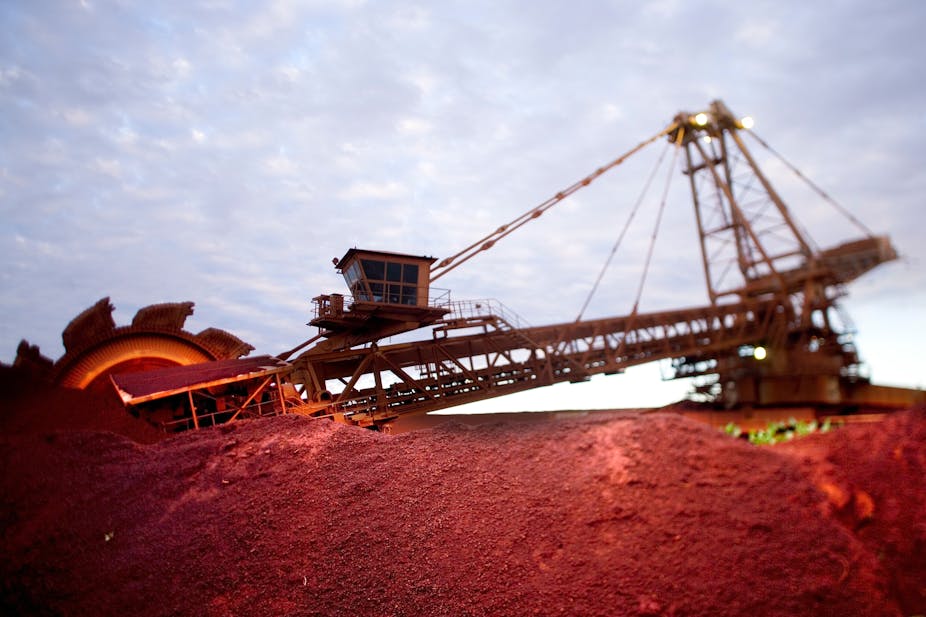AUSTRALIA BY NUMBERS: The Australian Bureau of Statistics has released the first batch of its census data. We’ve asked some of the country’s top demographers and statisticians to crunch the numbers on Australia’s population: how we live, where we work, who our families are and how we spend our time.
Here, Monash University’s Bob Birrell tells us what the statistics say about Australia’s hottest political potato - migration.
The 2011 census results confirm the importance of immigration in shaping Australia’s population make-up.
The results also throw up some puzzles. The Labor Government argues that the current high migration intake is needed in order to augment Australia’s skilled labour force, especially in the resources industries.
But half of the census count of overseas-born people who reported arriving in Australia between 2006 and 2011 was located in either Sydney (25.3%) or Melbourne (24.6%). Though Perth’s share is increasing, only 13.4% the 2006-2011 arrivals were located in Perth and another 2% in the rest of Western Australia.
The great divide
Another significant finding, given past anxieties about the influx from Asia, is that two of the four largest source countries were not Asian. Of the census count of overseas-born people arriving in Australia between January 2006 and August 2011, the largest country-of-birth groups were India (156,321), the United Kingdom (143,618), China (124,064) and New Zealand (118,422).
There is a two-way split in migration settlement. The bulk of Asia-born migrants end up in Sydney and Melbourne: 66% of China-born and 63% of India-born arrivals since 2006 were located in one of these cities. Those born in the UK, South Africa and New Zealand locate more in Perth and South East Queensland.
The Asian migrant focus on Sydney and Melbourne reflects the continuing strength of family reunion and humanitarian migration inflows, as well as the proclivity of skilled Asian migrants to locate in Sydney and Melbourne where their communities are concentrated.
International students
However, there is another factor at work. This is the overseas-student influx. The number of international students surged through 2005 to 2008, with many staying on in Australia.
In the case of Melbourne, India was by far the most important single source country of migrants between 2006 and 2011. Indians contributed 58,984 of the total number of 292,678 overseas-born residents who arrived during these years and were residing in Melbourne in 2011. Most are likely to have been students.
The census count for Melbourne includes 15,050 India-born persons who arrived in 2008. This was the peak year of the student influx. By comparison, there were only 5,861 Indian-born residents who arrived in 2010. This is a consequence of the sharp decline in the number of student arrivals by 2010, especially those from India.
A tale of two cities
Though Sydney still attracted the highest share of overseas-born people who arrived between 2006 and 2011 (25.3%), this share was well down in comparison with earlier years. Of those arriving to Australia between 2001 and 2005, 31.4% were in Sydney as of 2011, as were 37.2% of those who arrived between 1991 and 2000.
By contrast, Melbourne’s share remained fairly stable (at around 24%) across these three year-of-arrival groups. In particular, Sydney is losing some appeal for China-born immigrants with only 34.6% of the 2006-11 arrivals residing in Sydney as of 2011, compared with 48.1% of the China-born who had arrived in Australia between 2001 and 2005.
It is this decline in Sydney’s attractiveness to Asian migrants, as well as the city’s continued loss of people to other parts of Australia (shown elsewhere in ABS internal migration reports), which explains why Sydney is falling behind Melbourne in population growth. Melbourne is estimated to have grown by 368,000 between 2006 and 2011 and Sydney by 233,000.
A conspicuous absence
The story for UK, NZ and South African migration to Australia is quite different. Migrants from these countries have been important in the increasing movement (off a low base) to Perth. Far more of the UK-born people who arrived in Australia between 2006 and 2011 located in Perth (33,843) than in Sydney (26,903) or Melbourne (21,371). There is a similar story for the South Africa-born. The New Zealand-born, too, have been heading to Perth with 17,202 of the 2006-11 arrivals located in Perth, compared with 18,554 in Melbourne and just 15,698 in Sydney.
In non-metropolitan WA, Asian migrants are conspicuous by their absence. The total number of 2006-2011 arrivals located in the rest of WA was 23,234 or 2% of all such arrivals in Australia. Of these, just 747 were born in China and 880 in India. The biggest single source was the 5,818 born in New Zealand, followed by those born in the UK, the Philippines and South Africa, whose numbers were respectively 3,656, 2,608 and 2,593.
The census confirms that migration continues to be a metropolitan phenomenon, with only limited relevance to the resources boom. This outcome reflects the poorly targeted nature of Australia’s immigration selection system.

